Winter Squash 101
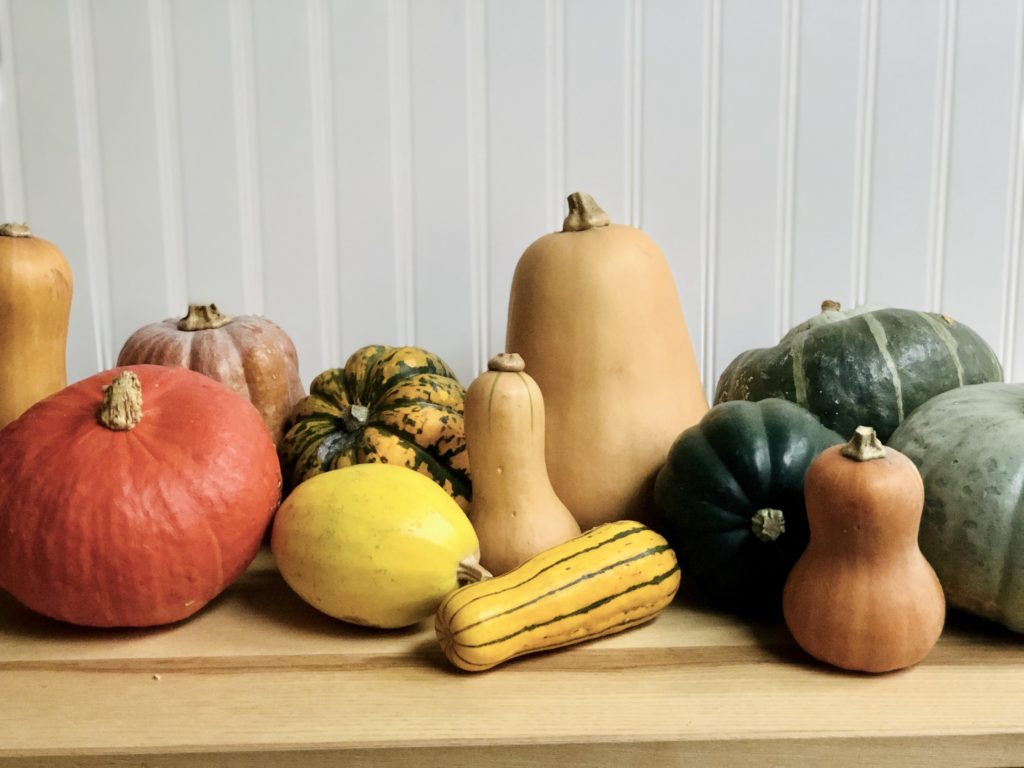
Here at Lakewinds, we’re all about getting cozy and comfy as the winter months arrive. What better way to settle in than make a delicious recipe using winter squash? Though a humble fruit (yes, it’s a fruit!), squash is very versatile and enhances the flavor of many dishes.
What are winter squash?
- Winter squash come from the genus Cucurbita, which is made of herbaceous flowering vines that produce edible fruit.
- Winter squash are different from summer squash, such as zucchini, which are quick-growing with a soft, edible skin. Winter squash are slow-growing and have a skin that hardens into a rind, allowing them to be stored throughout the winter.
Health benefits of winter squash
Each variety has its own nutrient profile, but squash are packed with complex carbohydrates, fiber, and healthful nutrients, including:
Vitamin A – benefits immune system, vision, and reproduction
Vitamin C – benefits your skin, wound healing, and development of tissues
Potassium – regulates fluid balance, muscle contractions, and nerve signals
Manganese – aids in metabolism of nutrients, bone building, blood clotting
Folate – promotes bone formation, DNA replication, healthy growth
Omega 3 Fatty Acids – help prevent and manage heart disease
B vitamins – promote cell health, energy levels, neurological function
Winter squash varieties
Beginning in October, we get a large variety of winter squash from our local farms, including Featherstone Farm in Rushford, MN.
Buttercup squash
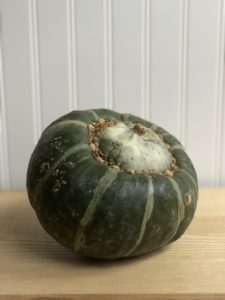
This winter squash has a turban-like cap that crowns its emerald green, striped skin and has a deep orange interior that some say is even sweeter than butternut squash. It’s a delicious substitute for anything that calls for pumpkin, and its seeds are delicious when tossed with cinnamon and butter and roasted for an hour at 275°F.
Red Kuri squash
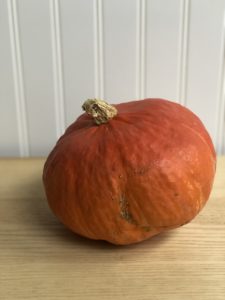
This orange, tear-drop looking squash has thin skin and appears to be a pumpkin without the ridges. It has a sweet, chestnut-like flavor and is a delicious complement to curries, stir fries, soups, and stews. Check it out here in our very own Harvest Bowl recipe.
Delicata squash
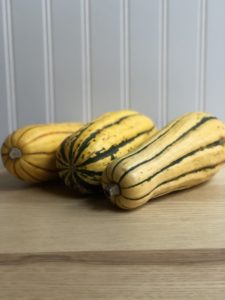
Often referred to as the sweet potato of winter squash, delicata is sweet and (you guessed it) delicate, making it ideal to simply roast and serve; stuff with your favorite rice, bean, corn, and salsa mixture; or slice into “chips” and roast until crispy and caramelized. Creamy and sweet, delicata squash is an easy-to-cook, rewarding winter squash.
Spaghetti squash
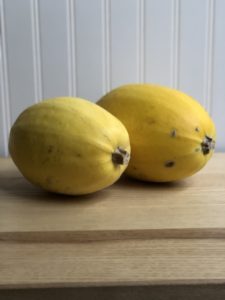
Spaghetti squash is a great substitute for traditional grain-based pasta. Squash “noodles” taste delicious paired with an Italian pasta sauce and fresh Parmesan, or tossed with veggie stir fry for a take on pad thai. Spaghetti squash come in a variety of colors, including ivory, yellow, and orange. The more yellow the flesh, the higher the concentration of vitamin A.
To use, simply cut the squash in half, scoop out the seeds, drizzle with olive oil and salt and pepper, and bake, flesh-side down on a baking sheet, for 20-30 minutes at 400°F or until tender. Using a fork, gently remove the squash “noodles.”
Butternut squash
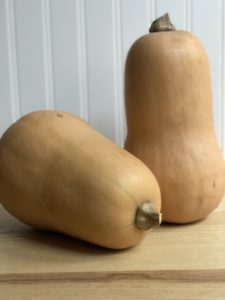
Butternut squash is sweet with a nutty, orange flesh that’s high in nutrients. It’s delicious when roasted with olive oil and salt, and can be turned into a flavorful soup or added to turkey chili for added color and heartiness.
Fun fact: When you buy a can of pumpkin from the store, in addition to pumpkin it typically contains other squash varieties, including butternut.
Honeynut squash
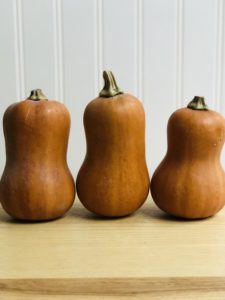
A mini-me of butternut squash, honeynut is even sweeter and nuttier, with twice the amount of beta-carotene as the butternut. Roasting it is the best way to experience it in all its glory—halved, de-seeded, drizzled with olive oil and roasted in the oven at 400°F for 20 minutes. You can also substitute it in any recipe calling for winter squash.
Butterscotch squash
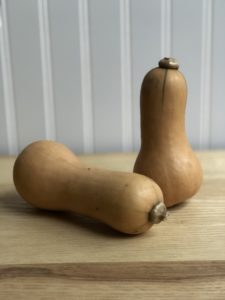
This squash is similar to but smaller than butternut, perfect for a smaller serving size. It’s sweet and ideal for roasting, stews, soups, and more.
Kabocha squash
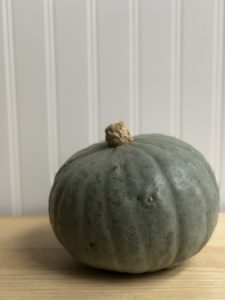
This Japanese variety of winter squash is gorgeous, whether in its red cloak, striking in gray, or simple and elegant in green. All three have a bright yellow-orange flesh with a lovely chestnut flavor. Described as a cross between a sweet potato and pumpkin, it’s delicious in curries, stews, or simply roasted in olive oil. The skin is edible, but can be peeled if preferred.
Carnival squash
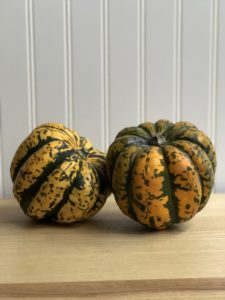
Not only a beautiful decorative squash for your center-piece, carnival squash is equally delightful when roasted and added to your favorite stew or served as a side dish. This small, striped squash is sweet and pleasing to the eye and taste buds.
Koginut squash
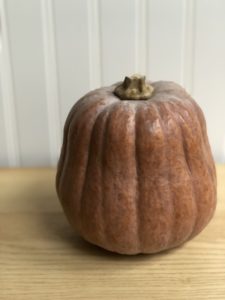
A cross between the Japanese kabocha squash and butternut squash, the koginut has a deliciously smooth texture and is superiorly sweet—great for roasting whole or peeling and dicing to add to your favorite harvest bowl.
Acorn squash
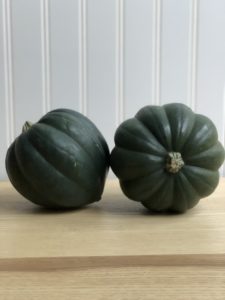
Named for its shape, the acorn squash has a green, ridged exterior and is often used for baking and stuffing, as its size is perfect for portioning out a meal. It is less storage-savvy than other winter squash and should be cooked quickly after purchase. It has less beta carotene than other varieties but still packs a punch in nutrients and flavor.
Pie pumpkin
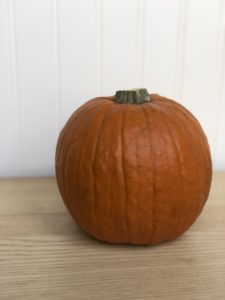
This squash differs from its jack-o’-lantern counterparts in that it’s sweeter and starchier and yields a smooth, silky product after roasting, ideal for your favorite pie or muffins. To cook: halve, de-seed, rub with olive oil and bake at 375° for one hour or until tender. Then scoop the flesh into a food processor and process until smooth and silky. Use in place of canned pumpkin in any recipe.
Turban squash
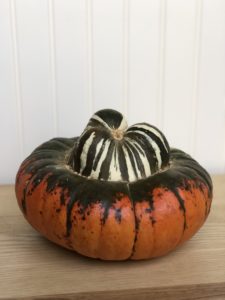
A close relative to the buttercup squash, as per its name, this squash wears a distinctive turban on its orange-and-green crown, making it a beautiful centerpiece for celebrating the harvest season before it’s made into a delicious dish. Its texture is similar to butternut squash and pumpkin and is often used for stuffing or soup.
How long can I store winter squash?
It depends on the variety, but most winter squash can be stored throughout the winter if kept in a cool room (ideally 50°-55°F) with a humidity of 60-70%.
Tip: A great place to store them would be a dark cabinet, cupboard or closet in a cooler part of the house.
Acorn, delicata, and spaghetti squash are the most perishable, with storage life lasting around 4 weeks. As a result, don’t wait too long to enjoy in your favorite dish.
Where do I start?
Head to the recipe section of our website for a recipe highlighting Red Kuri squash and local sausage: Squash, Sausage & Kale Harvest Bowl
Challenge yourself to try one new winter squash this season. You’ll be happy you did!
